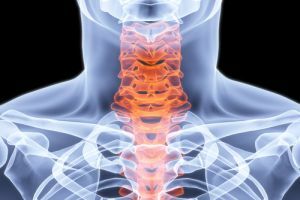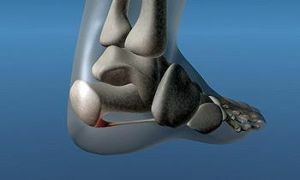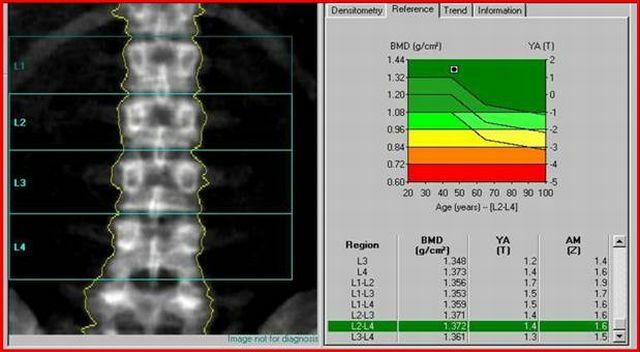 Neck rib is an additional fibrous formation of a small size .
Neck rib is an additional fibrous formation of a small size .
This anomaly is diagnosed in 0.5% of healthy people, but only in 10% of cases it is accompanied by any symptoms.
As a rule, signs of a pathology appear only in elderly patients in the form of lowered shoulders or pulling down hands. In any case, this condition requires the advice of an experienced doctor.
Contents of the article
- What is it?
- What happens in pathology?
- Causes of anomaly
- Degrees of development of the disease
- How are additional ribs classified?
- Clinical picture
- Diagnosis of anomaly
- What to do and how to treat?
- When a doctor's help is needed
- Indications for
- surgery Complications and prediction
What is it?
This syndrome consists in the formation of a firm process, which is localized in the cervical spine. This formation can have different sizes.
In some people, it represents a slight bone growth, while in others it resembles a full complementary rib.
Sometimes a child is born with an extra rib in the cervical spine. This condition usually does not pose a threat to health and life.
But if the education will pinch the nerve, pain and tingling sensation in the hand may occur. As a rule, such manifestations arise as the body ages.
Additional cervical ribs occur at the same frequency from one or both sides. In this case, this pathology is much more common in women than in men - the ratio is approximately 85:15.

In the photo you can see where the cervical ribs of the
are located. What happens when the pathology?
If the cervical ribs are of an impressive size, they can significantly alter the anatomical structure of the neck.
Sometimes, such formations press on the nerves of the neck, which leads to severe pain. Discomfort can give in hand.
If there is a lesion of the upper limbs, the movements become awkward. There may also be a feeling of weakness, cold or heaviness.
Causes of anomaly
At the initial stage of development, the embryo has 29 pairs of ribs. Of these, only 12 remain, while the rest are reduced. If the embryo formation process is disrupted, cervical ribs may appear.
As a rule, they are located in the area of the seventh or eighth cervical vertebrae.
Degrees of development of the disease
Based on the classification, which as early as 1969 was proposed by VA.Gruber, there are several degrees of additional cervical ribs:

An additional rib in the photo on the left
- The first degree of the - in this case the rib does not go beyond the transverse process located in the region of the first thoracic vertebra.
- The second degree - the rib extends beyond these boundaries, but does not reach the cartilaginous area of the first thoracic rib.
- Third degree - the rib reaches the sternum and connects to it by means of a ligament apparatus.
- Fourth grade - the structure of the cervical rib resembles the pectoral fins and has a direct connection to the sternum.
How to classify additional edges?
Depending on the location of the extra cervical ribs, they are either one- or two-sided. The latter have different values and differ in the intensity of the symptoms.
The clinical picture is directly influenced by degenerative-dystrophic processes that occur in nearby soft tissues.
There are also true and false edges. In the first case, education has a head, body and neck.
In addition, by means of the costal-vertebral joint it is connected with the transverse process. False ribs in this case are the articulation of the body of the rib and transverse process. This can occur as a synostosis or syndesmosis.
In addition, additional edges are complete and incomplete.
In the first case, they are similar to the real rib and, when placed on the seventh vertebra, they are connected by means of a strand with the first thoracic rib.
Incomplete fin has a free end in soft tissues. Sometimes it can be connected to the first thoracic rib using a fibrous strand.
Clinical picture of
The appearance of symptoms of this anomaly is affected by the anatomical features of the rib and its relation to the vascular-neural bundle.
Often the additional rib squeezes this part of the body, which provokes uncomfortable sensations.
As a rule, the anomaly is accompanied by a swelling of the bone consistency, which can be seen or detected during palpation.
Disturbances of the nervous system at first resemble disorders of the sensitive sphere.
In this case, there are pain, coldness in the limbs, paresthesia, and sometimes there is itching. With the subsequent development of pathology, muscles lose their strength, their atrophy develops.
If there are problems with blood circulation, the subclavian artery is squeezed. This can provoke not only an additional rib, but also a forward staircase muscle.
As a result, the pulse on the radial artery is weakened or lost. Often there is a thrombosis of veins. In childhood, sometimes formed torticollis.
If this symptom appears, it is recommended to perform an X-ray examination to exclude the presence of an additional rib.
Diagnosis of an anomaly
To diagnose artery compression, a diagnosis is performed on the symptom of Adson. 
For this, the patient should sit down, put his hands on his knees, take a deep breath, raise his chin and turn him towards the localization of pathology.
As a result of pressure changes and a decrease in heart rate, it is possible to judge the compression of the artery.
It is impossible not to mention the symptom of Manuilov, which consists in the development of a thick neck with a splitting down and an increase in the anteroposterior diameter.
In addition, a peculiar continuation of the neck are the lowered shoulders. Often over the clavicle, the doctor manages to find an additional cervical rib. With pressure on him, pain and paresthesia in the upper extremity appear.
When carrying out the diagnostic, the important importance is given to instrumental methods of research. These include the following:
- radiography;
- rheography;
- sonography;
- magnetic resonance imaging.
What to do and how to treat?
If an extra rib does not cause uncomfortable sensations, a person may not seek medical help.
In case of complaints, you need to ensure complete peace of the neck, arm and shoulder.
When you need the help of a doctor
Many people are wondering when to go to a doctor.
A visit to a specialist can not be postponed if you notice a pain in the bones. Also a signal to visit a doctor is the swelling or tenderness of the skin in the area of the bone.
In detecting this defect, the use of medications that help reduce spasm of the stair muscle is shown.
In addition, the doctor can prescribe funds that contribute to vasodilation and resorption of scar tissue.
In some cases it is necessary to use fixative bandages for the hand. Very useful massage and therapeutic gymnastics. Also often used electrophoresis with novocaine, lidase, potassium iodide.
If there are manifestations of compression of the subclavian artery, conservative therapy is unlikely to yield tangible results.
If a seal appears on the rib, it is worthwhile to consult a doctor - this process is not necessarily related to the formation of an additional rib.
Indications for surgery
 The purpose of surgical intervention is to remove additional ribs. Typically, the operation is performed under general anesthesia in the thoracic compartment.
The purpose of surgical intervention is to remove additional ribs. Typically, the operation is performed under general anesthesia in the thoracic compartment.
The procedure involves the removal of the anterior staircase muscle, which is carried out at the first and second degree of pathology. If a third or fourth degree is found in a person, an additional cervical rib resection should be performed.
For the operation, as a rule, supra-access is used. In more rare cases, axillary access is indicated. In most cases, such interventions have positive results.
Complications and prognosis of
If the anatomical defect is not treated in a timely manner, post-stenotic aneurysmal enlargement of the artery located under the clavicle can occur. In some cases, it can be found in the region of the supraclavicular fossa.
This pathology can lead to the formation of thrombi and embolism in the distal area. Acute venous thrombosis often develops.
Additional cervical ribs are an anatomical defect, which in most cases does not cause uncomfortable sensations.
If the symptoms of the pathology still appeared, you should immediately consult a doctor. Without adequate therapy, this disease can lead to complications. In some cases, there is a need for surgical intervention.



